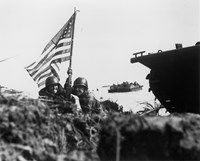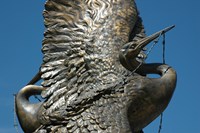- Golden Gate National Recreation Area (263)
- Lewis & Clark National Historic Trail (233)
- Gettysburg National Military Park (226)
- Fort Vancouver National Historic Site (225)
- Boston National Historical Park (187)
- Fredericksburg & Spotsylvania National Military Park (173)
- Fort Stanwix National Monument (158)
- Antietam National Battlefield (128)
- Aleutian Islands World War II National Historic Area (123)
- Show More ...
- Geologic Resources Division (44)
- National Center for Preservation Technology and Training (38)
- Inventory and Monitoring Division (29)
- National Historic Landmarks Program (26)
- American Battlefield Protection Program (23)
- Archeology Program (18)
- Mid-Atlantic Inventory & Monitoring Network (18)
- National Heritage Areas Program (18)
- National Register of Historic Places Program (18)
- Show More ...
Showing 5,257 results for military fort ...
Castle Clinton National Memorial
Wisely Chosen Ground Wayside
Ulysses S. Grant's Last Visit to St. Louis
- Type: Article

In May 1945, General Dwight D. Eisenhower accepted the surrender of Germany, ending World War II in Europe. Eisenhower chose to remember Victory in Europe by actively commemorating the sacrifices and cooperation that made it possible. For Eisenhower and the Allies, the road to victory was not easy. Eisenhower believed that Victory in Europe Day--VE Day--could and should serve as a reminder of the cost of war for future generations. Explore this story further in this article.
Series: Ten Years at Vancouver Barracks
Japanese American Memorial to Patriotism During World War II
Finishing Touches and the Future of Vancouver Barracks
The Great American Outdoors Act Revitalizes Barracks Building
- Type: Article

In 2020, Congress passed the most significant conservation legislation enacted since the environmental movement of the 1960s and 70s: The Great American Outdoors Act (GAOA). This was great news for Fort Vancouver NHS, which secured $15.2 million of that funding to renovate Building 993, one of Vancouver Barracks’ three large double infantry barracks buildings.
Visiting Vancouver Barracks
- Type: Article

From the beginning of the National Park Service’s custody of Vancouver Barracks, Fort Vancouver National Historic Site staff envisioned a place of recreation and learning for the public. After years of work, and with improved, accessible routes and programming, they finally welcomed visitors to parts of the site that were previously difficult to reach.
Beneath the Barracks: Archeology Considerations for Utilities Upgrades
- Type: Article

When Fort Vancouver National Historic Site took over the U.S. Army’s Vancouver Barracks in 2012, many of the utilities systems were decades old – some had not been updated since they were built in the first half of the 20th century. Bringing those systems up to standard was a top priority for creating a sustainable, historic campus for public service.
Accessibility Matters: Building a Barracks for Everyone
Post to Park Transfer
Developing the Master Plan
- Type: Article

The Post-to-Park transfer of the East and South Barracks to the National Park Service didn’t take place overnight – planning began over a decade earlier with thorough public involvement and community input. In 2012, Fort Vancouver National Historic Site released its Draft Master Plan for the site, with the goal of establishing a vision for public use and providing guidance for park managers for the next 20 years.
Partnerships for a Public Service Campus
- Type: Article
Assan/Asan Beach
- Type: Place

During the Japanese occupation of Guam, CHamoru were forced to build defenses on the beach, including the pillboxes and bunkers that can still be seen today, in preparation for the American invasion. That invasion came on July 21, 1944, W Day for Guam. While a simultaneous attack took place five miles south at Hågat, the Third Marine Division landed on the 2,500-yard Assan Beach, marking the start of the Battle of Guam.
Series: The Port Royal Experiment
- Type: Article

In the fall of 1861 after the Battle of Port Royal, the US military came ashore around Beaufort and found thousands of now formerly enslaved people in control of the region. The military had no real plan yet for what to do with these people or even their legal status. Newly freed Black South Carolinians were active participants. They demanded access to programs to support labor reforms, land redistribution, quality education, and military service.













